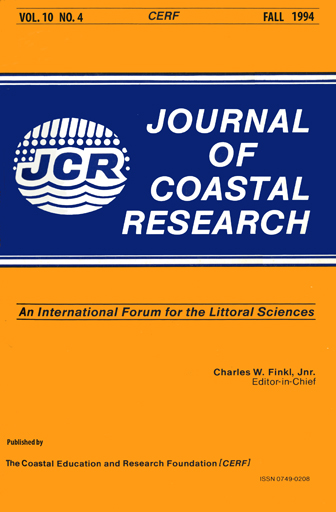Assessing the Stability of Inner Shelf Dredge Spoil Mounds Using Spreadsheet Applications on Personal Computers
Keywords:
Sediment transport, threshold of sediment motionAbstract
Three methods viz the HANDS and ALLISON (1991) method, predictions of sediment threshold, and predictions of sediment transport rate are used to assess the long term stability of dredge spoil mounds on the inner shelf and compared with available observations of their behaviour. These methods are chosen for simplicity and ease of implementation with a spreadsheet application on a personal computer.
Three main approaches were followed: an evaluation of the annual, and daily limits of onshore-offshore sediment movement near the spoil mound; a comparison between the theoretical thresholds of sediment motion and the annual wave height and period joint distribution: and an evaluation of sediment transport rates and directions using semi-empirical relationships.
The HANDS and ALLISON (1991) method had the smallest data requirements: mean and standard deviation of the annual significant wave height distribution; and the median grain-site at the mid-point of the shoal zone. Analysis of sediment threshold and comparison with wave climate required data concerning the annual joint wave height and period probability distribution and sediment textural characteristics. Sediment transport rate calculations required the most detailed information about the site: annual joint wave height and period probability distribution: sediment textural characteristics; and mean unidirectional current velocity.
Using a spreadsheet, it is relatively easy to simulate a range of values (that span the likely conditions) with all three methods if the necessary data are not available.
All the methods produced predictons consistent with available observations, and all were straightforward to implement within a spreadsheet application. The choice of method depends on the information required, with each method needing different data and providing contrasting but complementary outputs.


